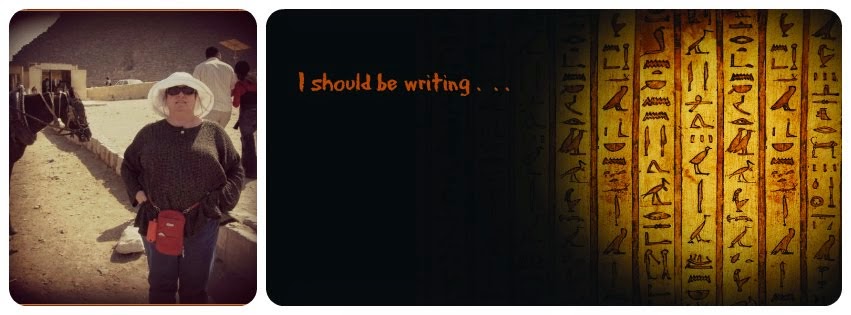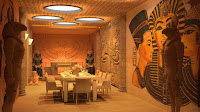THE HISTORY OF BEER IN ANCIENT EGYPT
Did you know that the gods of Egypt used to get hammered? Or that there was an entire festival dedicated to drinking beer and passing out?
The ancient world was a dangerous and freaking terrifying place. Pretty much any time before the invention of wifi and the microwavable burrito are dark ages full of ignorance, plague, and terrible monsters. Even just drinking the water back in the day could lead to a slow and agonising death.
For more about beer in ancient Egypt, see my slightly less humorous post, Bread and Beer.
Kings and Queens of Egypt: Metropolitan Museum
The ancient Egyptians regarded their king and the office of kingship as the apex and organizing principle of their society. The king’s preeminent task was to preserve the right order of society, also called maat. This included ensuring peace and political stability, performing all necessary religious rituals, seeing to the economic needs of his people, providing justice, and protecting the country from external and internal danger. It has sometimes been said that the ancient Egyptians believed their kings to be divine, but it was the power of kingship, which the king embodied, rather than the individual himself that was divine.
Funerary cloth of Isetnefret
From the Egyptian Textile Museum: Funerary cloth of Isetnefret From Egypt New Kingdom, 1300-1070 BC Tii pours a libation before her deceased mother This type of painted linen panel was placed on the chest of the coffin. It was another means of ensuring the eternal provision of offerings, which were also depicted on the walls of the tomb. Water, as a substance with no colour, taste or smell, was used in Egyptian rituals for purification.
It is now in the British Museum EA65347.
Amara West 2017: Greetings from Osiris!
Elisabeth Sawerthal (King’s College, London)
Working on objects in a study season involves the close cooperation of different specialists on the same objects. This became especially apparent in the last days.
As an illustrator for the study season at Amara West, I get to work on a great variety of types of objects collected over eight seasons of excavation at the site. These objects need to be drawn for final publication and further study.
Ancient Egyptian Stories Will Be Published in English for the First Time
Translated from hieroglyphics on monuments, tombs and papyri, the book will present tales few outside of academia have read
While people may view inscriptions in Greek or Latin as pretty, they still recognize their merit as text. Indeed, writings from ancient Greece and Rome are revered and considered classics of Western literature. Egyptian hieroglyphics, however, are often seen as mere decoration. Sometimes, the characters are literally used as wallpaper.
Egypt’s Sun King: the Dazzling Reign of Amenhotep III (course information)
In the late 15th century BC Egypt possessed its greatest empire extending from north Syrian in the north to southern Nubia in the south.
Its trading contacts linked to the Mycenaean civilisation, Syria and tribal Africa. At the centre of this economic powerhouse resided the magnificent Pharaoh Amenhotep III who used his wealth and power to commission some of the greatest cultural achievements in ancient Egypt’s 3,000 years of history.
The fascination with Egypt has a long pedigree. Centuries ago, Europeans associated Egypt with mummies, tombs and pyramids. It was a land dedicated to the dead. Despite that grim association, Egyptian motifs cropped up again and again in European art and literature.
Giuseppe Verdi alluded to Egypt when he wrote his famous Aida. Not even Shakespeare was immune to this country's charms. An Egyptian obelisk, at some huge expense, was moved from Egypt to Italy in 1690 and erected in the square in front of St. Peter's Basilica for all the world to see.
The First Egyptian Room. Photograph, 1875. Frederick York
This is one of a collection of photographs taken by Frederick York of Notting Hill in 1875 which shows the first Egyptian room of the Museum. Along the wall above the display cases can be seen a cast of the sculptured and painted bas relief depicting the conquest of the Egyptian king Ramesses II (r. about 1279–1213 BC) over the Ethiopians. The cases below were mainly devoted to what the guide book of the time described as the ‘civil section’, showing domestic items such as furniture and costumes.
The exception to this were the cases seen in the far left of the photo, which contained religious iconography, including representations of sacred animals such as the jackal of Anubis and the Apis bull. The case in the far corner (Case 7) contained images of the gods Anubis and Bes. The mummies and coffins shown in the foreground were displayed in two rows of angled cases along the central part of the gallery.
The first Egyptian room is now the Raymond and Beverly Sackler Gallery of Egypt and Africa (Room 65).
Egypt's antiquities ministry restores colossus of Ramsess II at Karnak Temples
Photo courtesy of restorer Abdel Razek Ali
Sacred Cat Rug
Drawing of the Sacred Cat Rug (the Museum does not allow photographs) J Ginsberg
Possibly the world's oldest rug, this Egyptian relic is woven entirely from ancient cat hair and once carried a mummified human foot.
Built in 1883 by a millionaire merchant, the eccentric residence was sold in 1913 to Abraham S. Mussallem, and avid collector who expanded the museum’s assemblage of rare and historic artifacts that came with the unusual house. As an expert in both oriental rugs and Egyptian relics, Mussallem came into possession of an unusual find, a mummified human foot wrapped inside of a rug, which was taken from a pyramid or other archaeological site.
A garden in the desert
© Juan R. Lazaro
Note: Unless you read German, you need to click Translate in the pop-up window.
4,000 years ago King Snofru, south of Giza, built the first great pyramids of Egypt. A hundred-year-old death cult began with them in the necropolis of Dahshur. But the Pharaoh went further, as archaeologists have discovered: He transformed the area around Dahshur into a completely man-made landscape.
The Pharaoh’s House - "It Starts With Them"
The Manhattan-Based Center for Kids will Help Spark a Desire to Learn by Figuratively Transporting them Back in Time to Ancient Egypt
Antonio Kenyatta, Founder and Chief Pharaoh Scientist of The Pharaoh's House – It Starts With Them, is pleased to announce the upcoming launch of his innovative new learning center.
As a spokesperson for the project noted, The Pharaoh's House is a Manhattan-Based center for kids designed to reawaken their natural curiosity and spark an enthusiasm for learning. Pulling together math and science learning program principals and exploratory fun into a museum-quality environment, this center will inspire kids to want to start learning more.



























































